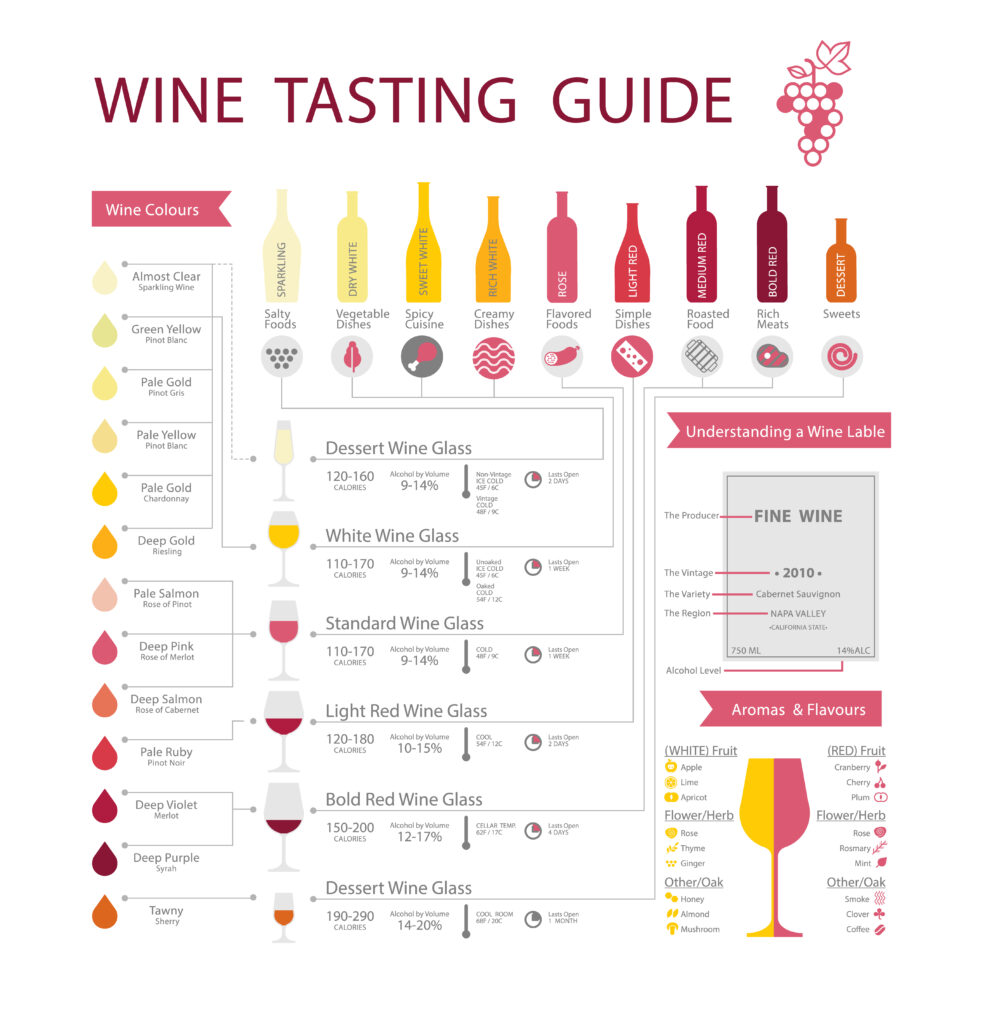The main idea of wine-food pairings is that certain elements—namely texture and flavor—in food and wine react differently to each other. Finding the right combination of these elements will make your meal more enjoyable. Of course taste, above most things, is subjective, so here are a few things to get started.
First, there are six basic tastes. When deciding on pairings, these are the tastes you should consider:
• Acid • Bitter • Piquant (Spiciness) • Fat • Salt • Sweet
Acid, bitter, and spice all clash with one another, so avoid pairing highly acidic things with something bitter. The other three tastes—sweet, fat, and salt—all pair well with each another.
Second, depending on your mood, start with a fixed choice on the food or wine. Whichever you choose first, consider its full flavor palette before researching the best complement.
It’s also a good idea to decant any wine before serving. This will lessen the sharpness of the tannins, which allows the flavors to mingle.
POULTRY AND MEAT
A simple rule for meat pairings is the lighter the meat, the lighter the wine.
Carménère and Merlot are smooth, slightly full-bodied reds. Either is a nice summer choice when served lightly chilled, and is the perfect pair for summer steaks and blackened chicken. Expect flavors of violets and red cherries, and they even work well in a sauce reduction. Also a good choice with Mediterranean salad.
Pinot Noir is arguably the most popular light-body and fruity red. It is dry, with medium-high acidity and pairs well with grilled chicken, pork, and duck. Also goes well with your favorite pasta dish.
FISH
Fish are divided into categories by texture and flavor. Lighter types include haddock, perch, tilapia, bass, and crustaceans. Good pairs are unoaked chardonnay, white Bordeaux, or Pinot Grigio.
Fish that are cut more like steak; salmon, mahi mahi, shark, swordfish, and tuna, go well with oaked chardonnays, white Cotes du Rhone, white Burgundies, Viognier, and even a dry rosé.
Sauvignon Blanc is a favorite as it is considered very food-friendly. It is creamy, spicy, acidic, and soft—a good choice for most fish, even sushi.
If serving your fish with sauce, this is also a consideration. When pairing with the sauce, the wine should be slightly sweeter. Also, the darker the sauce, the darker the wine.
BUBBLES
Believe it or not, champagne is very versatile as a food pairing; unless the meal includes steak or sweet desserts (despite being served often with wedding cake). For traditional brut Champagnes, try scrambled eggs, nuts, popcorn and potato chips, aged and hard cheeses, pasta with cream sauce, and any kind of fish or shellfish.
If you really want to indulge with sweets, or if you are choosing for a celebratory event, try an Italian asti; it is sweeter than French‑Champagne.

